Last Update:
What Is AI Referral Traffic?
You open Google Analytics 4 and spot a few strange sources:
perplexity.aichat.openai.comgemini.google.comcopilot.microsoft.com
They’re not bots. They’re not random backlinks.
They’re a new, fast-growing traffic channel: AI referral traffic.
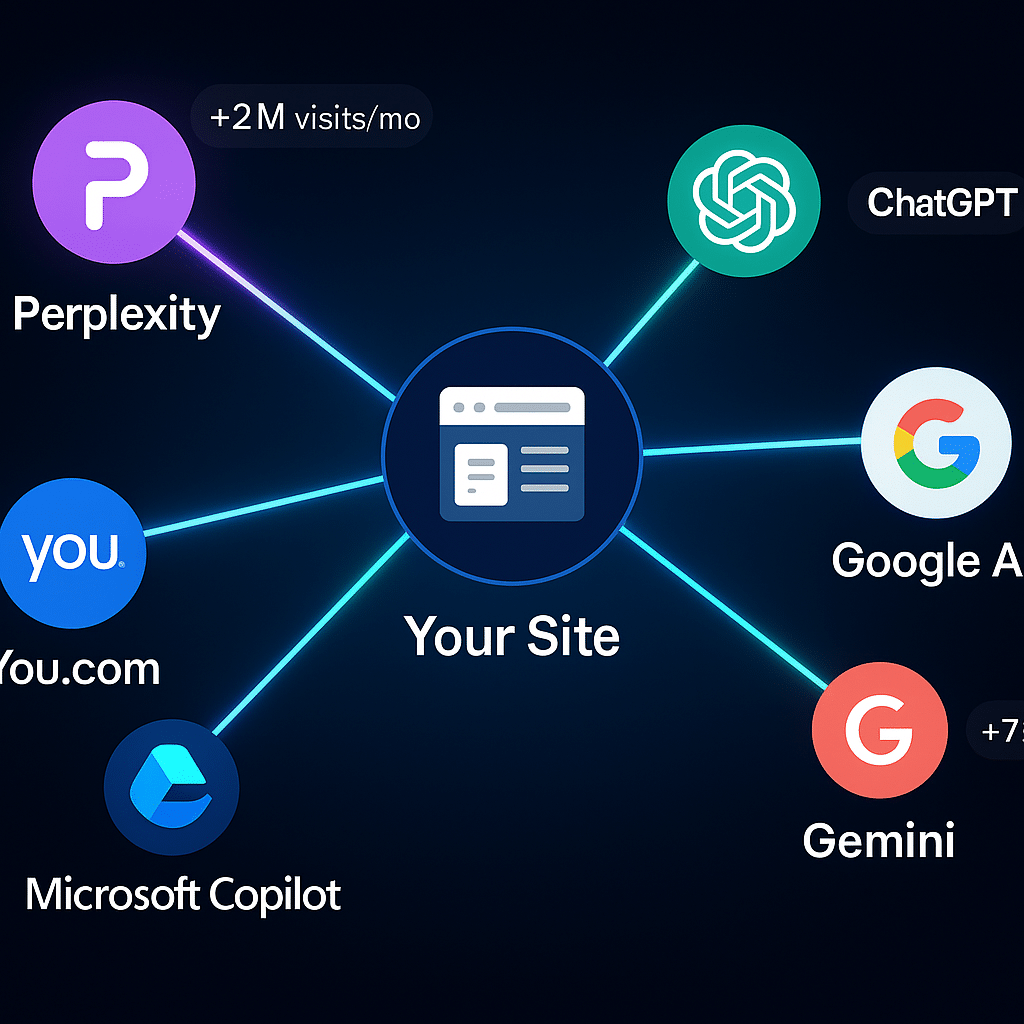
In 2024–2025, tools like ChatGPT, Perplexity, Gemini, and Google’s AI Overviews quietly started sending real visitors directly to websites. According to multiple studies, AI-driven referrals have grown more than 10x in under a year in some industries, and are now driving hundreds of millions of visits to publishers and ecommerce brands. Adobe for Business+2ContentGrip+2
By 2026, if you’re not tracking and optimising for AI referral traffic, you’re flying blind in the new search landscape.
This guide breaks down:
- What AI referral traffic actually is
- How it differs from traditional SEO traffic
- Why it matters so much for publishers & businesses
- The key platforms sending AI referrals today
- How to optimise your content and tech stack to earn more of it
Table of Contents
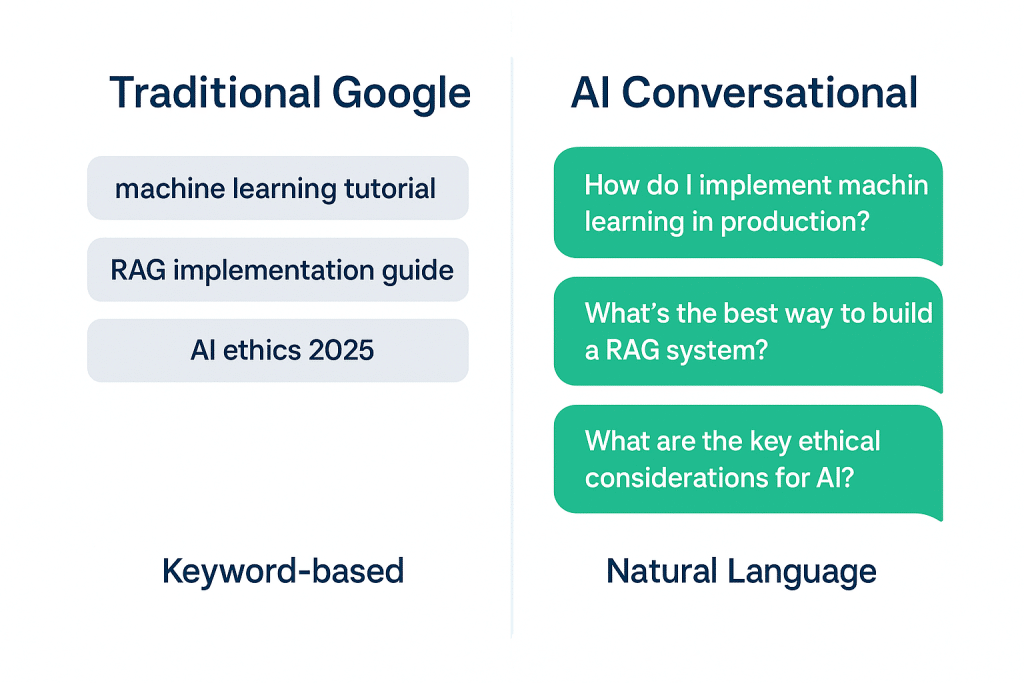
Definition of AI referral traffic
Let’s start simple.
AI referral traffic is the segment of visitors who land on your website after clicking a link or citation inside an AI-generated answer from tools like ChatGPT, Perplexity, Claude, Gemini, or Google’s AI Overviews. DashThis+3Conductor+3Semrush+3
Working definition:
AI referral traffic = visits that start from a real user clicking a link in an AI-generated response.
This is different from “AI mentions” (where your brand is named but not linked) and different from AI simply reading your content when generating answers. AI referral traffic is only about actual clicks from humans.
Most industry definitions now converge on the same idea:
- Conductor: visitors who arrive after clicking a link or citation inside an AI answer. Conductor
- Semrush: website visits from links cited in AI responses like ChatGPT, Perplexity, Claude, and Google AI Overviews. Semrush
- DashThis & others: traffic from AI search tools recognised in analytics (e.g., ChatGPT Search, Perplexity AI, Copilot, Gemini). DashThis+1
“Did you know?” bullets
- Did you know: Adobe data shows AI-driven referrals to US sites grew more than tenfold between July 2024 and February 2025. Adobe for Business+1
- Did you know: ChatGPT sent around 243.8 million visits to 250 news and media sites in April 2025—almost double what it sent just four months earlier. Digiday+1
- Did you know: one analysis found ChatGPT still accounts for only 0.19% of all web referral traffic, while Google drives about 42%—so we’re early, but growth is explosive. Alphametic
- Did you know: many AI platforms don’t pass referrer data reliably, so some of your AI referral traffic is currently hiding inside “Direct” in GA4. Semrush+2DashThis+2
Here’s the kind of view you want to build:
Alt text: GA4 dashboard showing AI referral traffic segments from ChatGPT, Perplexity, and Gemini
How it differs from traditional search traffic
From the user’s perspective, AI search vs traditional SEO feels very different.
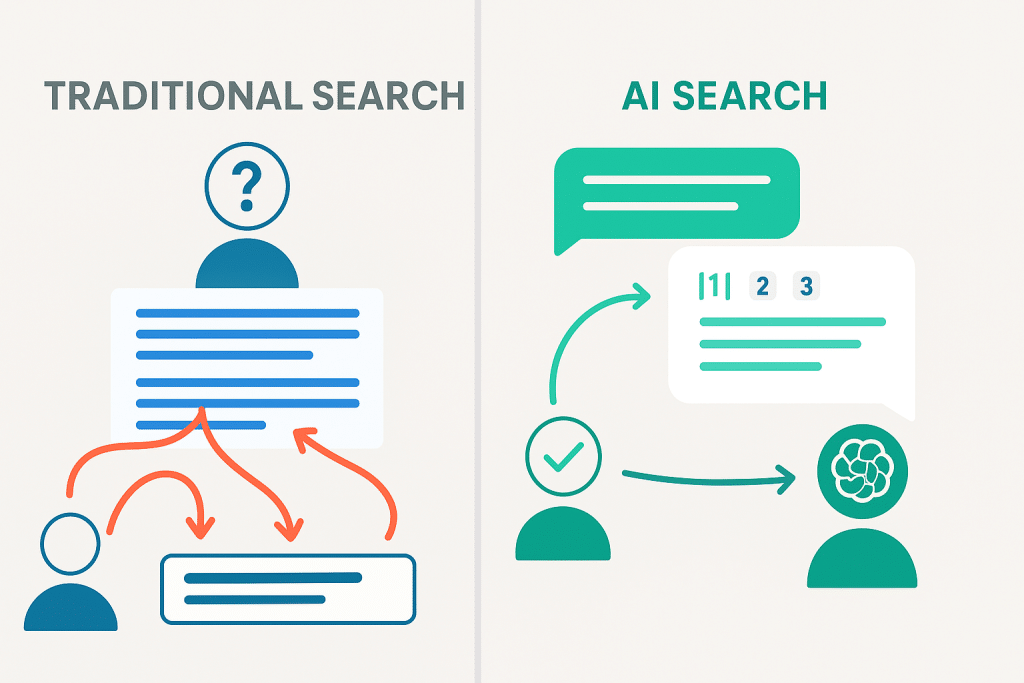
Traditional search:
- User types a short query: “best email marketing tool 2026”
- Sees 10 blue links + ads
- Skims titles & snippets
- Clicks 1–3 results, maybe bounces back
AI search / answer engines:
- User asks a conversational question: “I run a B2B SaaS company—what’s the best email marketing platform for 10k contacts and strong API support?”
- The AI generates a synthesized answer
- It includes citations or recommended sites inline or in a sidebar
- The user only clicks a source if they want to go deeper, verify something, or take action
So while both channels still show in your analytics as “search-ish” traffic, what’s happening in the user’s head is very different.
User behaviour differences
Generative AI tools are heavily used for research and decision support:
- Surveys from Adobe and others show users lean on AI for travel planning, complex product comparisons, banking decisions, and in-depth research. ContentGrip+2Adobe Blog+2
- Many shoppers now use AI as a pre-filter, arriving on your site after the assistant has already narrowed options.
When those users do click, we see distinct engagement patterns:
- AI-referred visitors have 23–27% lower bounce rates than non-AI referrals in several Adobe studies. ContentGrip+2Chief Marketer+2
- They spend 30–40% longer on site and view more pages per session (often ~10–12% more). ContentGrip+2Chief Marketer+2
- Traffic skews more desktop, which usually means deeper, more deliberate research sessions. ContentGrip+1
In plain language: AI referral traffic behaves like mid- to lower-funnel traffic, even when the original query looked informational.
Conversions are more nuanced:
- Some ecommerce studies show AI referrals still convert slightly worse than traditional channels like organic search or email—though the gap is closing every quarter. Adobe for Business+3Digital Commerce 360+3maximiliankaiser.org+3
- At the same time, engagement and revenue per visit from AI channels have jumped dramatically year over year.
So while it’s not “magic traffic” that instantly outperforms everything else, AI referral traffic consistently looks more engaged and more considered than average.
Referral source mechanics
Under the hood, AI referrals move differently than classic organic search.
Traditional search traffic:
- Shows up under channels like
Organic Search(google / organic,bing / organic) orPaid Search. - Referral logic is fairly stable and well-understood.
AI referral traffic:
- Often appears as referrals from new domains, such as:
chat.openai.comperplexity.aicopilot.microsoft.comyou.com- Various
ai.google.com/gemini.google.comexperiments SALT.agency®+2HubSpot Community+2
- Some platforms (especially mobile apps or privacy-focused tools) strip or obscure the referrer, so clicks show up as “Direct” in GA4. Semrush+1
- Google’s AI Overviews are particularly messy: clicks are still labelled as “google / organic”, with no
ai.google.comreferrer, so AI and non-AI clicks are blended. redeggmarketing.com+2Search Engine Journal+2
This is why many teams now:
- Create regex-based custom segments in GA4 to group AI sources (e.g.,
chat\.openai\.com|perplexity\.ai|copilot\.microsoft\.com|you\.com|ai\.google\.com). SALT.agency®+2prablaymarketing.com+2 - Create a separate “AI Tools” channel group, so AI referral traffic no longer hides inside “Referral” or “Direct”. Whatagraph+3prablaymarketing.com+3LinkedIn+3
Because AI answer engines behave differently from classic web search, a whole new practice has emerged around them: Generative Engine Optimization (GEO)—optimising content to be cited and surfaced inside AI systems. Wikipedia+2support.conductor.com+2
AI referral traffic is the most tangible KPI for whether your GEO and AI search strategy is working.
Why it matters for website publishers
AI search isn’t just a shiny new toy; it’s already reshaping how traffic and revenue are distributed across the web.
On one hand:
- Google AI Overviews and other AI summaries are driving a sharp rise in “zero-click” searches, where users get what they need without visiting any site at all. Some studies show news publishers losing 10–25% of Google search referrals after AI Overviews rollouts, and individual pages dropping up to 79% when pushed below AI summaries. New York Post+3Search Engine Journal+3Digiday+3
On the other hand:
- AI assistants like ChatGPT and Perplexity are now sending hundreds of millions of visits per year—and that number is compounding.
If you rely on content, subscriptions, or ecommerce revenue, your search strategy must expand from “How do we rank in Google?” to:
How do we get cited, clicked, and trusted across AI search and answer engines?
Qualified traffic, higher intent
Why are marketers and publishers so interested in AI referral traffic, even when volumes are still relatively small?
Because early data suggests AI referrals are disproportionately valuable per visit:
- AI-driven visits to retail sites have:
- ~23–27% lower bounce rates
- 30–40% more time on site
- 10–12% more pages per session
compared to non-AI traffic. Adobe Blog+3ContentGrip+3Chief Marketer+3
- In travel and high-consideration categories, AI-referred visitors can deliver much higher revenue per visit (Adobe data showed ~80% higher RPV for some travel sites versus average traffic). ContentGrip+2Adobe Blog+2
At the same time, conversion-rate studies show two key patterns:
- Short term: Organic LLM traffic often converts worse than traditional channels like organic search or email—sometimes underperforming every channel except paid social. LinkedIn+3Digital Commerce 360+3maximiliankaiser.org+3
- Trendline: The conversion gap is shrinking fast. Adobe has tracked AI referral conversion rates climbing from being 80–90% worse than non-AI in mid-2024 to a gap of only ~20–25% in mid-2025, with some months and verticals even seeing AI traffic outperform other sources. Retailgentic+3Adobe for Business+3Adobe for Business+3
So the story in 2026 looks like this:
- AI referral visitors are highly engaged and often further along in their research.
- They’re still maturing as a conversion channel, but the curve is steep and positive.
- As AI assistants move closer to checkout (for example, offering “instant buy” flows inside chat), those high-intent clicks will become even more valuable. FRANKI T
Emerging volume & growth trends
Some quick numbers to show how fast this is moving:
- AI-driven referrals to US websites have grown 10x+ since mid-2024, with retail seeing 12x growth and travel 17x+ in some windows. Chief Marketer+4Adobe for Business+4ContentGrip+4
- ChatGPT referrals to news and media sites grew from under 1 million visits (Jan–May 2024) to 25+ million in 2025 for news sites alone—a ~25x jump. TechCrunch+2Digiday+2
- One Ahrefs-based study found ChatGPT accounts for 0.19% of all web referrals today, compared with 42% for Google, but projects strong continued growth as users shift habits. Alphametic
- Semrush modelling suggests AI search visitors will surpass traditional search visitors by around 2028 if current trends hold. Semrush
- Wikipedia’s overview of Generative Engine Optimization (GEO) notes that AI platforms already influence roughly 6.5% of organic traffic by 2025, projected to push toward 14.5% by 2026 as AI search penetration grows. Wikipedia
In other words: AI referral traffic is still small compared to Google today, but it is growing exponentially and shaping the future of discovery.
Key platforms sending AI referrals (Perplexity, ChatGPT, Google AI Overviews)
Not all AI tools send traffic equally. In late 2025 and heading into 2026, three clusters matter most.
1. ChatGPT (including Search / browsing modes)
ChatGPT has two roles:
- AI assistant people use for research and recommendations.
- Emerging search front-end, where users run queries that hit the live web and surface links.
Multiple datasets (Semrush, Similarweb, Adobe, and others) show ChatGPT as the single biggest driver of AI referral traffic today across major websites, with some analyses estimating it contributes 40–60% of all AI referrals. [SMK] Social Media Knowledge+3Semrush+3Aihika.com+3
Typical referral patterns:
- You’ll see sources like
chat.openai.comin GA4. - Content that performs well:
- Detailed how-to guides
- Technical documentation
- In-depth explainers with clear structure and strong credibility signals.
2. Perplexity AI
Perplexity is practically built as an AI answer engine with citations as a core UX element. It surfaces multiple sources for nearly every response.
Why it matters:
- It sends a disproportionately high share of clicks per query because it explicitly encourages users to explore the listed sources.
- Many publishers report Perplexity as one of the top visible AI referrers in analytics (
perplexity.ai). Unique Logic Limited+2SALT.agency®+2 - Perplexity is also experimenting with revenue-share and publisher programs, which may further increase incentives to be cited. Aihika.com
If you want AI referral traffic today, Perplexity is low-hanging fruit because of its heavy emphasis on clickable citations.
3. Google AI Overviews / AI Mode
Google AI Overviews (and related “AI Mode” experiments) are the largest-scale AI summaries on Earth:
- AI Overviews already appear on a sizeable share of Google searches (double-digit percentages, with some studies estimating they show on 13–50% of queries depending on market and timeframe). New York Post+3Wikipedia+3Search Engine Journal+3
The twist:
- Clicks from AI Overviews don’t have a special referrer; they still show simply as
google / organic. There is noai.google.comlabel in GA4. redeggmarketing.com+1 - Several publisher groups argue that AI Overviews are cannibalising clicks, leading to lawsuits and antitrust complaints in both the US and EU. Digital Content Next+5Digiday+5The Guardian+5
What this means practically:
- AI Overviews matter for visibility and brand authority even when you don’t get as many clicks as before.
- When you do get clicks from AI Overviews, they behave just like AI referral traffic: users already saw a summary and chose you anyway.
4. Other emerging AI referrers
You’ll increasingly see:
- Gemini / Bard (
gemini.google.com,ai.google.com) - Microsoft Copilot / Bing Chat (
copilot.microsoft.com,bing.com/chat) - You.com, Brave AI Search, Waldo, Meta AI, and others SALT.agency®+2DashThis+2
Volumes are smaller than ChatGPT or Google, but each new assistant is another doorway to your site.
How to optimise your site for AI referral traffic
Ranking in Google is no longer enough. You also need to optimise content for AI referrals—so that AI systems:
- Understand your content clearly
- Trust you enough to cite you
- Present your URLs in positions where humans actually click
Think of this as an upgrade, not a replacement, for traditional SEO.
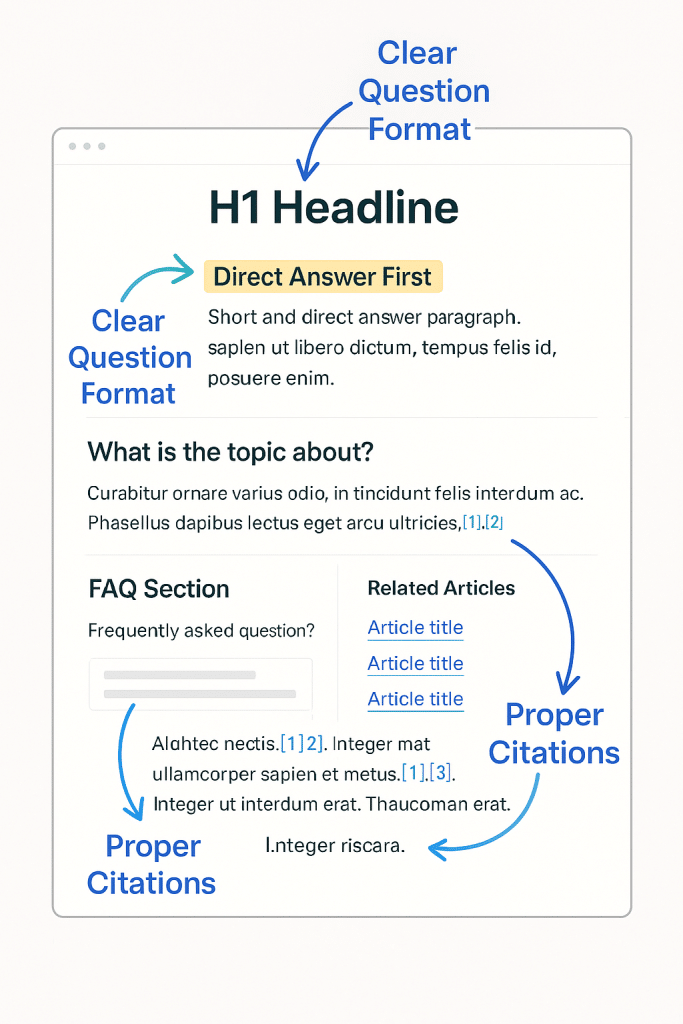
Content structure & readability
AI models love content that is:
- Clear
- Well-structured
- Explicitly answers questions
Best practices:
- Lead with the answer.
- Use an opening paragraph that directly answers the main query in plain language.
- Then expand with details, examples, and nuance.
- Use descriptive H2/H3 headings that mirror real questions:
- “What is AI referral traffic?”
- “How does AI referral traffic differ from traditional SEO traffic?”
- “How do I track AI referrals in GA4?”
- Break content into short paragraphs and bullet lists, so it’s easy for both humans and models to parse.
- Summarise complex explanations with “Key takeaways” boxes or bullet lists that AI can easily lift.
- Include visual structure cues:
- Step-by-step lists
- Numbered procedures
- Tables summarising pros/cons (where helpful)
Example of AI-friendly section intro:
What is AI referral traffic?
AI referral traffic is website traffic that comes from AI tools like ChatGPT, Perplexity, or Gemini when a user clicks a citation or link in an AI-generated answer. It’s different from traditional search traffic because users have already read a synthesized answer before choosing to visit your site.
That’s exactly the kind of sentence AI systems love to quote.
Alt text: Example article layout optimised for AI referral traffic with clear headings and FAQs about AI referral traffic
Conversational queries & FAQ formats
AI answer engines are fueled by conversational search.
People don’t type:
“ai referral traffic definition”
They type:
“What is AI referral traffic and how do I track it in GA4?”
“Is AI traffic better than SEO traffic?”
“How do I optimise my content so ChatGPT cites my site?”
To align your content with this:
- Include FAQ-style subsections that match natural questions your audience actually asks.
- Use H3 headings as questions, then answer them in the first 2–3 sentences of the paragraph.
- Add a dedicated FAQ section at the end of your article (and mark it up with FAQ schema—see below).
- Mine conversational queries from:
- Your own support tickets & emails
- Sales calls
- “People also ask” style SERP questions
- Prompts you see users ask in AI tools
- Use longer, natural-language headings that contain supporting keywords like “AI search vs traditional SEO” instead of stuffing short-keyword phrases.
The goal is to make your page the best possible “answer page” for the kinds of questions AI systems are seeing millions of times a day.
Citations & authority signals
AI tools prefer to cite sources that look authoritative, trustworthy, and specific.
Important authority signals include:
- Clear authorship & expertise
- Real author names, bios, and credentials
- Context like “Head of SEO”, “Data Scientist”, “CRO Lead”
- Cited data and external references
- Link to primary research (Adobe, Similarweb, etc.) when quoting stats
- Reference standards (Google Search Essentials, official docs) where relevant
- Topical authority & content clusters
- Don’t just publish a single post about AI referral traffic; build a cluster around AI search, GEO, ChatGPT SEO, AI Overviews, and analytics.
- Strong internal linking across this cluster helps both traditional search engines and AI models understand your expertise.
- High-quality backlinks & digital PR
- AI models learn from the wider web—brands that earn mentions and links from reputable sites tend to surface more often in AI answers. support.conductor.com+2Conductor+2
On your own site, you should also:
- Link out to deeper resources such as:
- A dedicated AI referral tracking tutorial (for example, a step-by-step GA4 setup guide) — you might host this at something like:
[AI referral tracking tutorial](/ai-referral-traffic-tracking-ga4/)
- A content clusters article showing how to structure topic hubs for AI search:
[Content clusters for AI search](/content-clusters-for-ai-search/)
- A dedicated AI referral tracking tutorial (for example, a step-by-step GA4 setup guide) — you might host this at something like:
- Link internally to your broader AI SEO content, like a ChatGPT for SEO guide, so AI (and humans) see you as a comprehensive resource. Aihika.com+1
Technical optimisation & schema markup
Everything above is useless if your site is a technical mess.
For AI referral traffic, focus on four technical pillars:
- Performance & UX
- Fast page load (Core Web Vitals still matter—for humans and crawlers).
- Mobile-first, responsive design.
- Clean HTML structure with logical heading hierarchy.
- Structured data / schema markup
- Implement
ArticleorBlogPostingschema for content pieces. - Use
FAQPageschema for your FAQ section (Google and other engines rely heavily on it). - Consider
HowTo,Product,BreadcrumbList, andOrganizationschema where relevant. - Ensure schema is valid and consistent with the visible page; AI systems are sensitive to manipulative markup. Search Engine Journal+1
- Implement
- AI-friendly crawling & access
- Make sure your robots.txt and meta tags don’t accidentally block AI assistants you actually want (some publishers choose to block specific AI bots; that’s a strategic call).
- If you do restrict training or summarisation, decide whether you still allow referral-friendly bots that respect your policies.
- Analytics & attribution
- Create a custom GA4 channel group for “AI Tools”, pointed at referrers like
chat.openai.com,perplexity.ai,you.com,copilot.microsoft.com, and others. LinkedIn+3SALT.agency®+3prablaymarketing.com+3 - Build an Exploration report or Looker Studio dashboard to monitor:
- AI sessions, engagement, conversions
- Performance by source (ChatGPT vs Perplexity vs Gemini, etc.) digital-power.com+2Casey Burridge+2
- Create a custom GA4 channel group for “AI Tools”, pointed at referrers like
This is where you’ll want to send readers from your AI Search Strategy hub to a dedicated tracking tutorial page with screenshots and templates.
Common pitfalls & mistakes to avoid
As AI referral traffic becomes a hot topic, a lot of teams are making the same missteps.
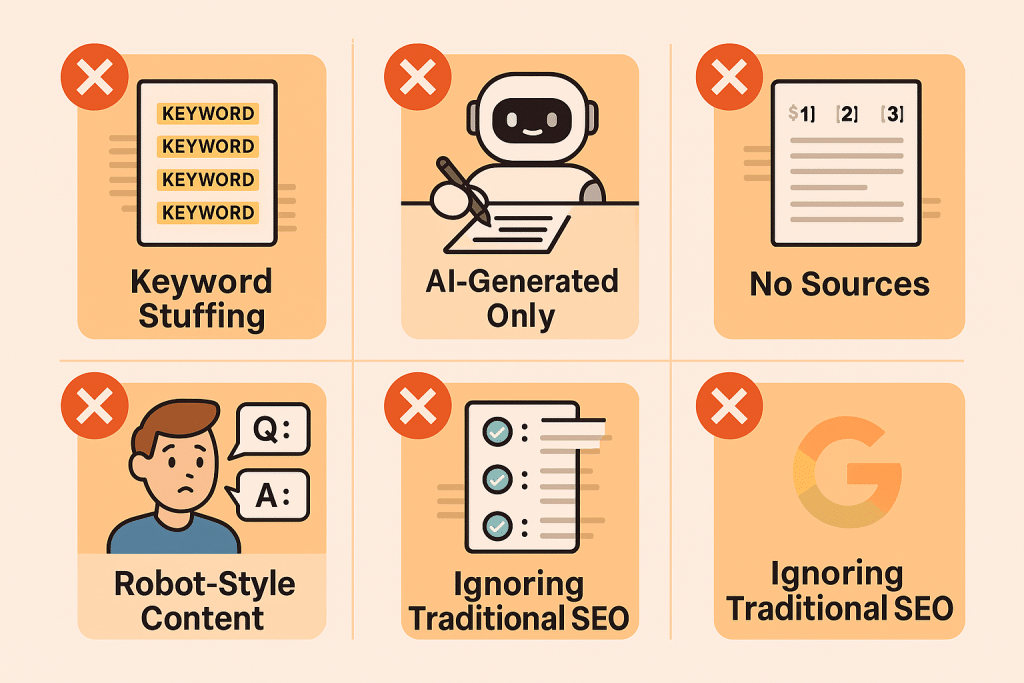
Avoid these traps:
- Treating AI search like old-school keyword stuffing
- AI answer engines don’t care if you repeat “AI referral traffic” 40 times; they care whether you clearly answer the question and add real value.
- Writing for bots instead of humans
- Over-optimised, robotic FAQs and unnatural phrasing can hurt trust with both readers and AI models. Focus on clarity, not tricks.
- Relying solely on AI-generated content
- Generic AI-written articles with no unique data, opinions, or examples rarely become trusted citations. Many AI search systems actively down-weight low-value AI content. Aihika.com+1
- Ignoring measurement
- If you don’t segment AI referrals in GA4/Adobe, you can’t tell:
- Which content is earning citations
- Which platforms actually move revenue
- Many marketers are panicking about “declining SEO” when part of that loss is quietly being offset by rising AI referral traffic they haven’t segmented yet. Facebook+3DashThis+3DashThis+3
- If you don’t segment AI referrals in GA4/Adobe, you can’t tell:
- Obsessing over Google only
- Google is still crucial—but Perplexity, ChatGPT, Gemini, and Copilot are increasingly important gatekeepers. Optimise beyond a single platform. Semrush+2Search Engine Land+2
- No content clusters or strategy
- Publishing one-off posts about AI referral traffic or AI search won’t build the topical authority AI systems look for. You need clusters: hubs, spokes, and consistent internal linking.
Next steps & checklist for your site
You don’t need to fix everything overnight. Start with a focused 30–90 day plan.
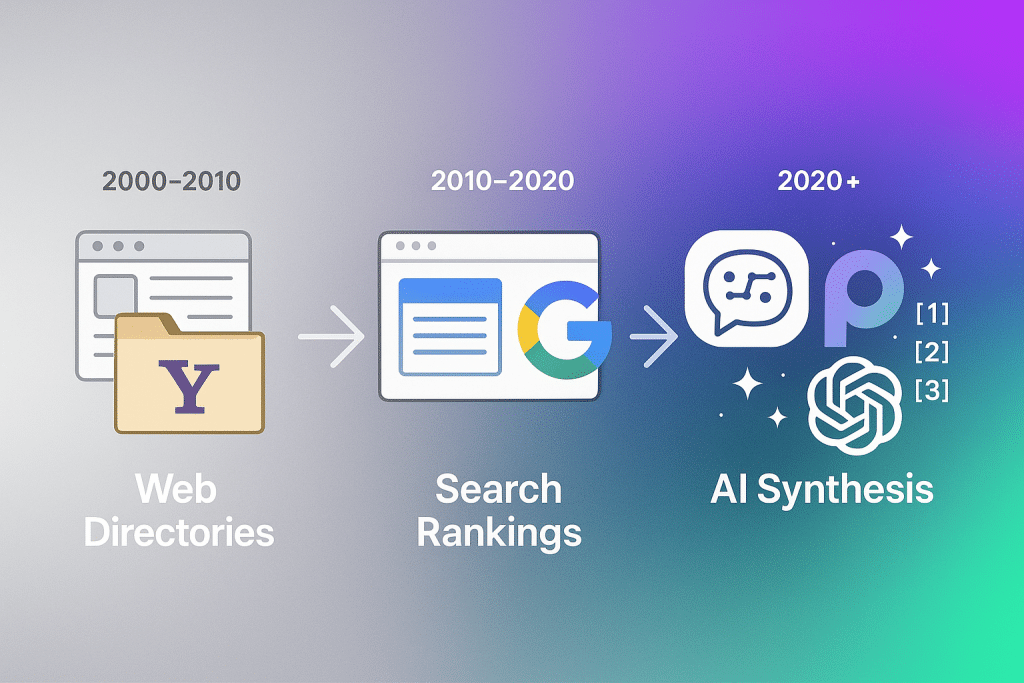
7–Day “quick start” checklist
- Audit your existing analytics for AI sources
– In GA4, go to Reports → Acquisition → Traffic acquisition.
– FilterSession sourcefor patterns likechat.openai.com,perplexity.ai,you.com,copilot.microsoft.com,gemini.google.com. SALT.agency®+2prablaymarketing.com+2 - Create an “AI Tools” channel group in GA4 so AI referral traffic is no longer mixed with generic Referral or Direct. prablaymarketing.com+1
- Identify your top 10 pages already getting AI referrals (by sessions or revenue).
30–Day optimisation sprint
- Rewrite those top 10 pages for AI clarity
– Add direct answer paragraphs at the top.
– Tighten headings.
– Add bullet-point summaries. - Add or improve FAQ sections on those pages, using natural, conversational questions.
- Implement FAQ schema and validate it with a structured-data testing tool.
- Improve internal linking to and from your AI search content:
– Link from this article to a tracking tutorial page that walks through GA4 setup step by step.
– Link to a content clusters article that helps readers build GEO-friendly topic hubs. - Review technical basics: Core Web Vitals, mobile layout, sitemap, robots.txt, and canonical tags.
90–Day AI search strategy
- Build an AI Search Strategy hub on your site
– A central page that links to:
– AI referral traffic guides
– ChatGPT SEO
– Google AI Overviews SEO
– Perplexity / Gemini optimisation
– Tracking & reporting tutorials - Define content clusters for your key topics, each with:
– A hub page
– 10–20 supporting articles
– Clear internal linking patterns - Create a dedicated AI referral tracking dashboard
– In Looker Studio or your BI tool, with filters by AI source, content type, and conversion type. Casey Burridge+2DashThis+2 - Start quarterly GEO reviews
– Use tools (Semrush, Conductor, custom scraping) to monitor:
– Where your brand appears in AI answers
– How often you’re cited vs key competitors Semrush+2Conductor+2
The goal: by early 2026, you want AI referral traffic to be a clearly visible, trackable, and optimised part of your acquisition mix—not a mysterious trickle of “weird” referrals.
Final call-to-action
AI referral traffic is no longer a curiosity. By 2026, it’s a critical signal of how visible and trustworthy your brand is inside AI systems that will shape the next decade of discovery.
If you want to stay ahead:
- Segment AI referral traffic in your analytics this week.
- Upgrade your top pages for clear answers, FAQs, and schema.
- Build content clusters around AI search, AI SEO, and your core topics.
- Connect this guide with:
- Your AI referral tracking tutorial
- Your content clusters for AI search playbook
Every month you delay is a month where AI answer engines train on your content—but send their referral clicks to someone else.
Start treating AI referral traffic as a first-class channel in your 2026 growth plan—and capture the visitors your competitors don’t even know exist yet.
Frequently Asked Questions About AI Referral Traffic
What exactly counts as AI referral traffic?
AI referral traffic includes visitors who arrive at your website through AI-powered platforms that cite web sources. The main sources are AI search engines like Perplexity and ChatGPT Search, AI assistants like Claude or Gemini that provide web citations, Google’s AI Overviews that appear in search results, and Microsoft Copilot integrated with Bing. You’ll see these as referrers in your analytics (perplexity.ai, chatgpt.com, etc.). Unlike traditional search where users see a list of links and choose, AI referral traffic comes from users who receive an AI-generated answer with embedded citations and then click those citations for more detail.
How is AI referral traffic different from traditional search traffic?
The fundamental difference is in user intent and behavior. Traditional search shows ten blue links users scan, compare, and often click multiple results. AI search provides one synthesized answer with citations users only click when they want deeper information or verification. This means AI referral traffic tends to be more qualified and engaged. Analytics typically show AI referral visitors spend more time on page, have lower bounce rates, and explore more content because they’re actively seeking depth rather than just scanning options. Additionally, AI systems choose which sources to cite based on authority and usefulness, not just SEO metrics.
Which AI platforms currently send the most referral traffic?
Perplexity is currently the largest individual AI referral source for most publishers, driving millions of monthly visits. Google’s AI Overviews reach the most users since they appear in billions of searches, but traffic is distributed across many publishers. ChatGPT Search is growing rapidly since its launch, particularly for technical and how-to content. You.com and Microsoft Copilot also send meaningful traffic, though smaller volumes. The landscape changes quickly new platforms emerge and existing ones expand features. Most publishers see a mix of sources, with the exact distribution depending on their content niche and audience.
Do I need to change my entire SEO strategy for AI traffic?
No, you don’t need to abandon traditional SEO, AI optimization builds on good SEO fundamentals rather than replacing them. Traditional search engines still drive the majority of traffic for most sites. The good news is many optimizations that help AI discoverability also help traditional SEO: clear content structure, authoritative information, proper citations, mobile optimization, and fast loading. The key differences are emphasizing conversational language over keyword density, creating comprehensive answers rather than keyword-targeted pages, and structuring content for easy comprehension rather than ranking factors. Think of it as evolution, not revolution.
How can I track AI referral traffic in my analytics?
In Google Analytics 4, check Acquisition → Traffic Acquisition and look for referrers including perplexity.ai, chatgpt.com, you.com, and similar domains. Create custom segments to group all AI referrers together for easier tracking. Set up custom reports specifically for AI traffic to monitor trends. In your analytics, AI traffic typically appears under “Referral” as the channel, with the specific AI platform as the source. Some AI platforms don’t pass complete referrer data, so your actual AI traffic may be higher than reported. Consider using UTM parameters in any content you control to better track AI-specific campaigns.
Does AI-generated content get cited by AI search engines?
This is complex and evolving. AI search engines can detect AI-generated content and often deprioritize purely AI-generated material, especially if it’s generic or low-quality. However, AI-assisted content with human expertise, original insights, and unique value can get cited. The key is whether your content provides something useful beyond what the AI could generate itself. Think of it this way: if your content is just repackaged information that AI already knows, why would it cite you? But if you add human expertise, original research, unique examples, or proprietary data, that’s citation-worthy regardless of whether AI helped you write it.
How long does it take to see AI referral traffic results?
AI traffic growth varies widely based on your content quality, niche, and existing authority. Some publishers see their first AI referrals within days of publishing well-optimized content, especially if they’re covering timely topics or have existing domain authority. Building substantial AI traffic typically takes 2-6 months of consistent publishing. Unlike traditional SEO where you might wait months for rankings, AI citations can happen faster because AI systems evaluate content quality directly rather than waiting for backlinks and authority signals. However, building significant volume requires establishing topical authority through multiple high-quality pieces in your niche.
Will AI referral traffic replace traditional search traffic?
Replacement is unlikely in the near term, but complementary growth is certain. Traditional search engines still handle hundreds of billions of queries and will remain dominant for years. However, AI search is the fastest-growing segment and will capture an increasing share, particularly for informational and research queries. Many searches will include both traditional results and AI elements (like Google’s AI Overviews appearing above organic results). The smartest strategy is optimizing for both: create content that works for traditional search while also being structured for AI comprehension. Publishers who master both will win regardless of how the traffic distribution shifts.
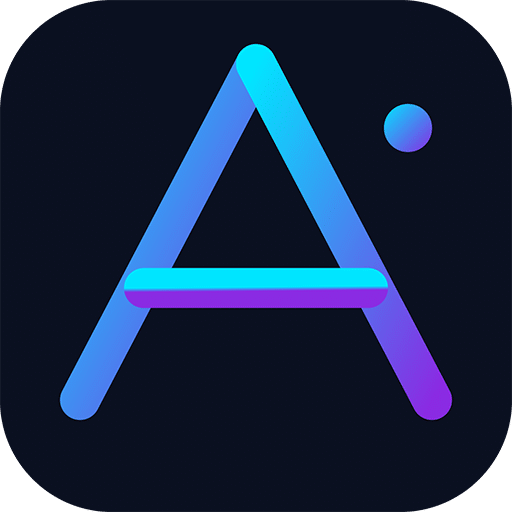

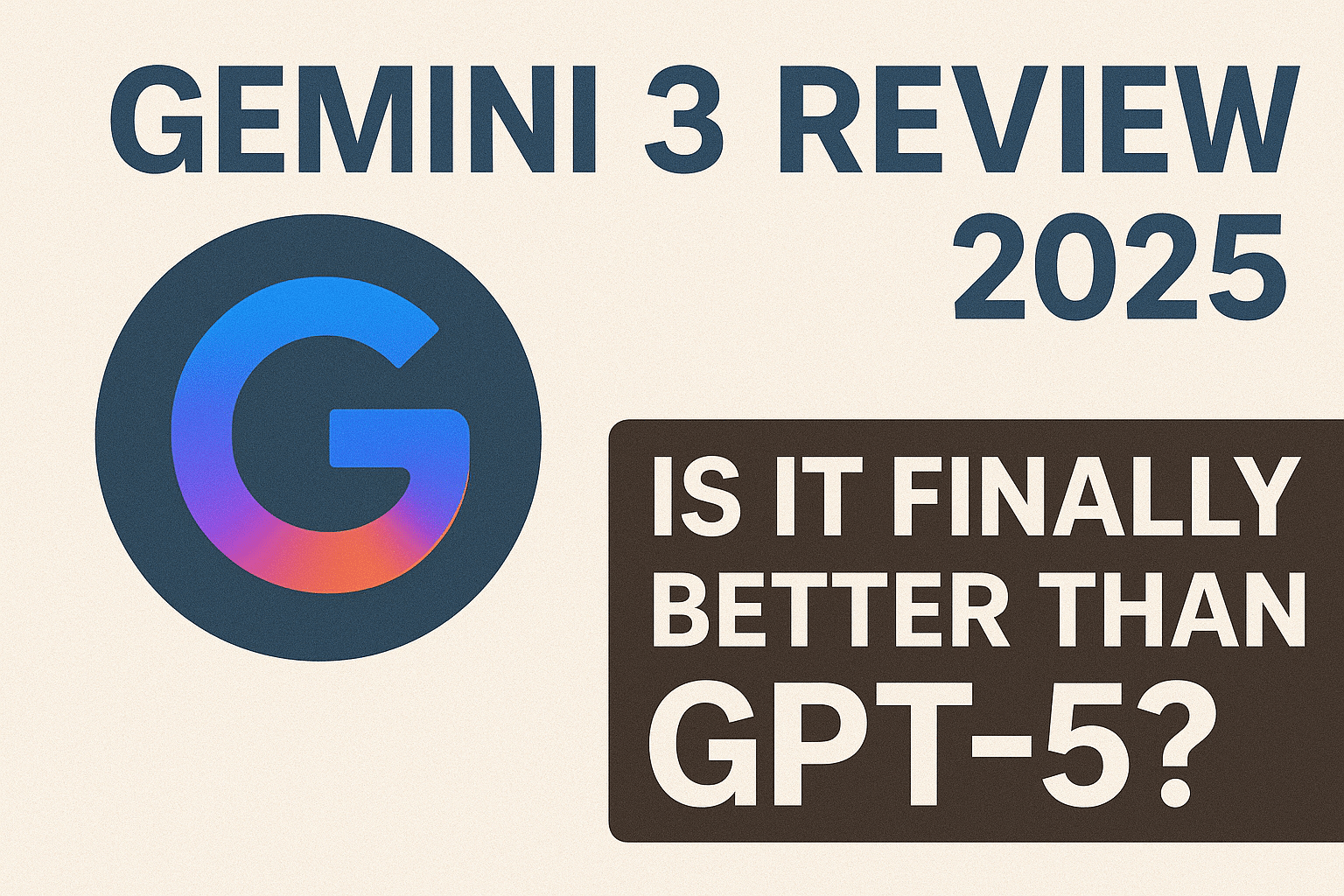
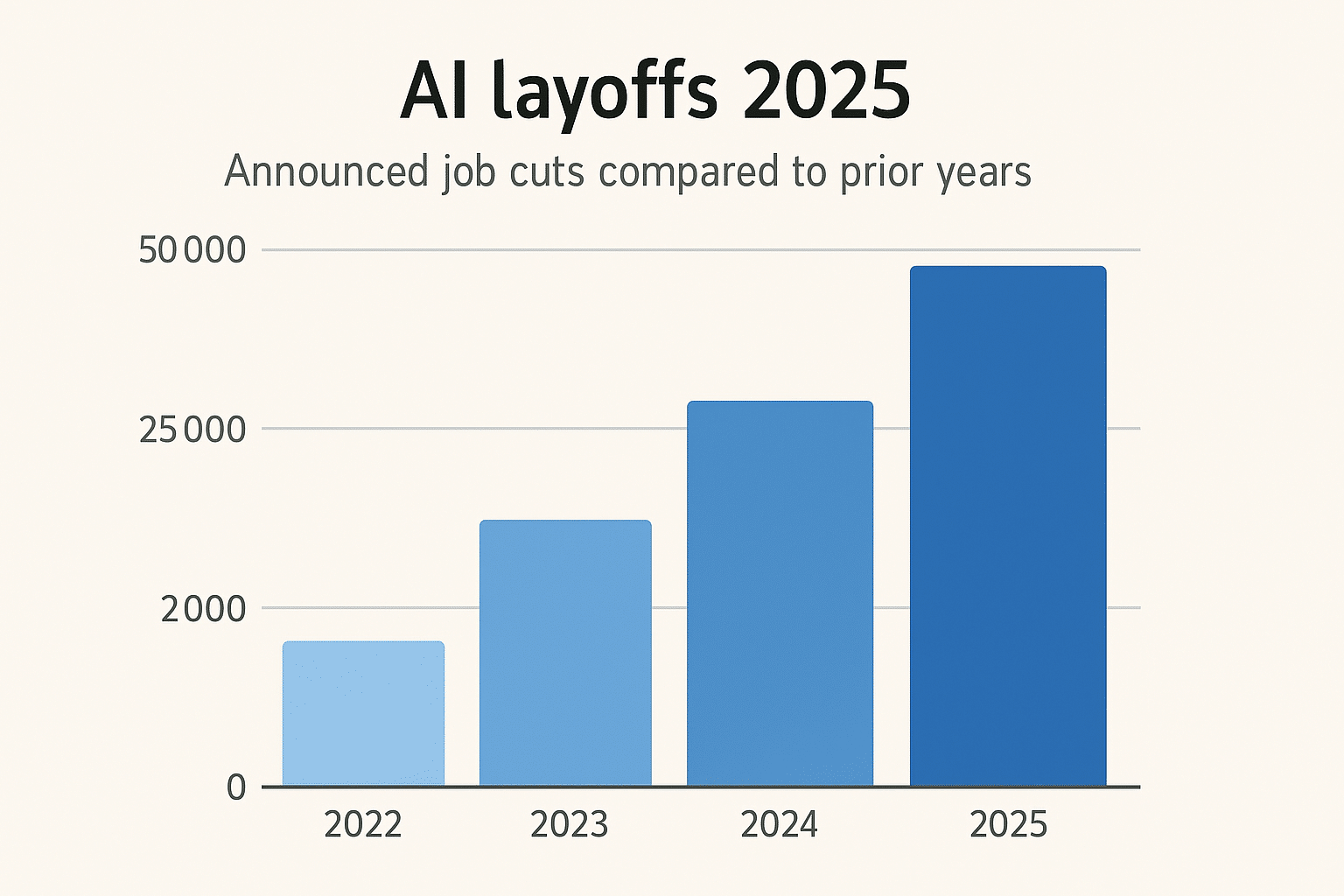





Leave a Reply